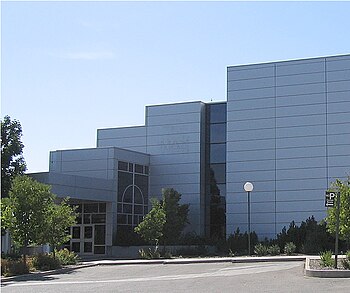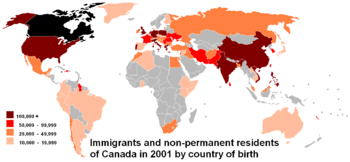 |
| English: The main entrance of in , , Canada, featuring Canadian provincial flags. Nederlands: Hoofdingang van Canada's Wonderland met de Canadese provinciale vlaggen, gefotografeerd in Vaughan, Ontario, Canada. (Photo credit: Wikipedia) |
Posted at 02/24/2015 12:29 PM
VANCOUVER, Canada - Canada recently implemented an online Express Entry System for those wanting to migrate to the country.
The Express Entry System allows an applicant to create an online profile, type in his best qualifications to be invited for permanent residency.
But immigration experts say there is a catch
Since its launch in January, more than 1,500 have already been invited to apply for permanent residency under the Express Entry System. But their invitation did not come from creating an online profile alone.
"It is very important to note that under this system, while you may qualify as a Federal Skilled Worker, Federal Trades Worker or under the Canadian Experience Class, you need to be able to show them that you have the offer of employment or the provincial nominations," said Arelene Tungohan, certified immigration consultant.
The Express Entry System is supposedly a faster route for entering Canada through its economic migration streams like the Federal Skilled workers, Provincial Nominations, and Experienced Class Programs.
Creating an online profile gives points for one's skills, education, work experience, and other relevant information. It is also supposed to allow one to register with Canada's job bank.
"Employers would be able to supposedly to go to job bank and handpick candidates who will be employed by them. Ang hindi alam ng marami na yung job bank portion hindi pa gumagana," she said.
Job offers and provincial nominations are not essential, but they give significant points, about half of the total 1200 points one can get under the new system.
This, Tungohan said, is where the challenge lies.
"If you don't have like a provincial nomination or an arranged employment LMIA-Based (Labor Market Impact Assessment) arranged employment, then anong laban mo sa mayroong ganun? Kasi the arranged employment and the PNP (Provincial Nominee Program) will give you 600 points. So this is really employer-driven. Ang hinahanap ng Canada at first right now is for those who already have work," she said.
This early, government claims the initial results are impressive as the new system is working to fill Canada's labor market needs.
Most of those invited were applicants from the sciences, electrical and construction industries.
Upon receiving an invitation, applicants have 60 days to complete and submit requirements with Immigration Canada guaranteeing a 6-month processing time.
Read more from Balitang America.
Source: http://www.abs-cbnnews.com/global-filipino/02/24/15/whats-catch-canadas-new-express-entry-system



























